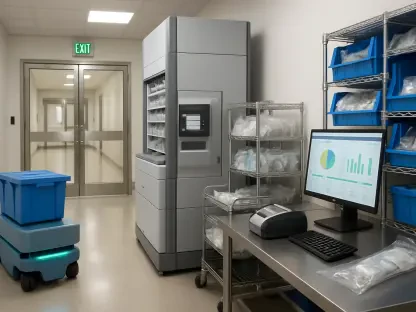Telemedicine has dramatically transformed healthcare delivery, an evolution accelerated during the COVID-19 pandemic. Now, in the post-pandemic era, the legal landscape of telemedicine continues to evolve rapidly, necessitating a thorough understanding of current trends, challenges, and solutions for all stakeholders involved. By staying informed, healthcare providers and policymakers can better navigate the complex environment of telemedicine regulation.
Impact of Telemedicine Policy Changes
Post-Pandemic Shifts
The end of the Public Health Emergency (PHE) marked a significant turning point in telemedicine policy. Prior to this, temporary waivers were in place to facilitate easier access to telehealth services and to allow clinicians to deliver care with fewer regulatory restrictions. With the expiration of these waivers, the framework within which telemedicine operates has undergone substantial changes, introducing both opportunities and challenges for continued patient care.
As these temporary waivers concluded, new legal frameworks have emerged to fill the regulatory void. These frameworks aim to sustain the growth and integration of telemedicine within the healthcare system while addressing concerns that came to light during the pandemic. Both patients and providers must now adapt to these changes, which require navigating a more structured regulatory environment. The implications of these new policies are profound, affecting access to care, continuity of services, and overall healthcare delivery.
Federal Policy Updates
From 2024 to 2025, federal policies concerning telemedicine evolved significantly, reflecting the need to regulate this mode of healthcare delivery more thoroughly. The Drug Enforcement Administration (DEA) played a crucial role by extending prescribing waivers and issuing both final and proposed rules aimed at regulating telemedicine practices. These rules are designed to ensure that telemedicine services comply with existing drug prescription regulations while accommodating the unique features of remote healthcare delivery.
Congress also contributed to policy updates by working flexibly to extend Medicare provisions that support telemedicine. These efforts highlight the government’s recognition of telemedicine as an essential component of modern healthcare delivery that requires a stable and supportive regulatory framework. The combined effect of these federal policy updates is a more robust and comprehensive set of guidelines that healthcare providers must navigate to maintain compliance and deliver effective telemedicine services.
State-Specific Challenges
Varying State Regulations
The landscape of telemedicine is further complicated by varying state regulations that govern licensure and reimbursement processes. These regulations differ significantly from one state to another, creating a patchwork of rules that clinicians must understand and follow. The lack of uniformity in state laws means that telemedicine practices can encounter different legal requirements depending on where their patients are located, adding a layer of complexity to healthcare delivery.
This variation in state regulations can lead to significant hurdles for telemedicine providers. Clinicians might face delays and additional administrative burdens as they work to understand and comply with different state laws. These challenges can impact the efficiency and effectiveness of telemedicine services, potentially limiting their benefits. The differences in reimbursement policies across states further complicate the financial viability of telemedicine practices, making it essential for providers to stay informed about the specific regulations that apply to their practice.
Interstate Licensure Solutions
Interstate licensure compacts, such as the Medical Licensure Compact and the Nurse Licensure Compact, have been developed to address some of the challenges associated with state-specific regulations. These compacts are designed to streamline the process of obtaining licensure across multiple states, allowing clinicians to provide telemedicine services more easily to patients in different locations. Despite their potential to facilitate cross-state practice, these compacts operate in different ways and are still burdened by individual state definitions of healthcare delivery, non-compete agreements, and standards of care.
While these interstate compacts represent a significant step forward, they are not without their limitations. Variations in medical standards and definitions of care across states can create inconsistencies that complicate the telemedicine landscape. For instance, what is permissible in one state might not be acceptable in another, leading to potential legal and compliance issues for providers. Continuing to enhance these compacts and fostering greater interstate collaboration will be crucial for fully realizing the benefits of telemedicine.
Legal and Compliance Challenges
Privacy and Security in Telemedicine
Privacy and security concerns are among the most pressing challenges in the realm of telemedicine. The transition to remote healthcare delivery has heightened the importance of ensuring that patient information is fully protected. While HIPAA-compliant telemedicine platforms are mandated, issues persist related to non-private environments where patients may engage in telemedicine visits, and the use of third-party applications that may not offer adequate data protection.
The mental health sector, in particular, faces unique challenges in maintaining confidentiality in telemedicine settings. Patients might find it difficult to access private spaces for their consultations, leading to concerns about confidentiality breaches. Additionally, certain third-party applications used in telemedicine may not fall under HIPAA regulations if they do not directly share data with clinicians. These privacy and security challenges necessitate ongoing efforts to refine and enforce robust protection measures for telemedicine platforms.
Prescribing Regulations
The regulations surrounding the prescribing of medications via telemedicine have also evolved significantly, guided by recent policy developments. The DEA’s final rule on buprenorphine and the proposed rules for special registrations have introduced new guidelines that telemedicine providers must follow. These changes are particularly relevant for the treatment of substance use disorders, where telemedicine has been shown to increase access to necessary treatments.
However, the varying prescribing policies at federal and state levels add layers of complexity to telemedicine practices. Providers must navigate these rules carefully to ensure compliance while maintaining the ability to deliver effective care. Consistent guidelines for prescribing medications via telemedicine are essential to enhance clarity and reduce administrative burdens. Incorporating research and data into policy deliberations will be crucial for developing effective and actionable prescribing regulations that support telemedicine’s growth.
Recommendations for Improvement
Policy Simplification
Simplifying telemedicine policies is a critical step in reducing administrative burdens, particularly for small practices that may struggle with complex compliance requirements. Lawmakers are encouraged to focus on creating clear, manageable guidelines that support telemedicine’s continued integration into the healthcare system. Simplified policies can help sustain essential telemedicine services, particularly for vulnerable patient populations who rely heavily on remote healthcare options.
Efforts to reduce unnecessary regulatory complexities would benefit both providers and patients by streamlining processes and enhancing the overall efficiency of telemedicine services. This can be achieved through targeted legislative reforms that prioritize transparency and accessibility in telemedicine regulations. By addressing the root causes of administrative burdens, policymakers can create a more supportive environment for telemedicine, enabling providers to focus on delivering high-quality care.
Enhancing Privacy Protocols
Given the ongoing privacy and security concerns in telemedicine, it is imperative to refine existing protocols to ensure the robust protection of patient information. Lawmakers and technology developers must collaborate to develop and implement advanced security measures tailored to the unique demands of telemedicine. These measures should address the vulnerabilities associated with remote healthcare delivery, including the risks posed by non-private spaces and third-party applications.
Clinicians also have a role to play in safeguarding patient data by adopting the latest technologies and best practices in cybersecurity. Continuous education and training on privacy protocols will be essential for maintaining high standards of data protection in telemedicine settings. By fostering a culture of security awareness and compliance, both legislative and technological advancements can work together to enhance the integrity of telemedicine services.
Facilitating Interstate Practice
Improving interstate licensure compacts is crucial for streamlining the process of cross-state telemedicine practice. Enhanced collaboration between states can reduce the compliance concerns that currently hinder the convenience and effectiveness of telemedicine. By adopting more uniform standards and definitions of healthcare delivery, interstate compacts can make it easier for clinicians to provide consistent and high-quality care to patients, regardless of their location.
Efforts to facilitate interstate practice should focus on addressing the specific hurdles that limit the efficiency of current licensure systems. This includes harmonizing state-specific regulations and removing unnecessary barriers to licensure reciprocity. By creating a more cohesive framework, states can support the broader adoption of telemedicine, making it a viable option for a more extensive range of healthcare services.
Conclusion
Telemedicine has profoundly transformed how healthcare is delivered, with this shift being significantly accelerated during the COVID-19 pandemic. In the current post-pandemic era, the legal framework surrounding telemedicine continues to evolve rapidly. This dynamic landscape requires all stakeholders, including healthcare providers and policymakers, to have a comprehensive understanding of emerging trends, challenges, and viable solutions. By staying up-to-date with these developments, healthcare professionals can better navigate the complex regulatory environment of telemedicine. This ongoing adaptation ensures that telemedicine remains a viable, effective, and legally compliant option for improving patient care, fostering innovation, and addressing healthcare disparities. Therefore, continuous education and awareness of regulatory changes are essential for anyone involved in telemedicine to successfully operate within the legal parameters and maximize the benefits of this modern healthcare delivery method.









